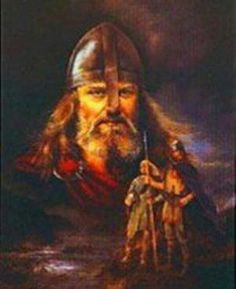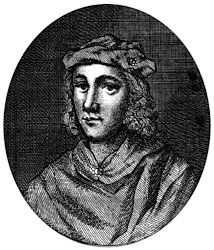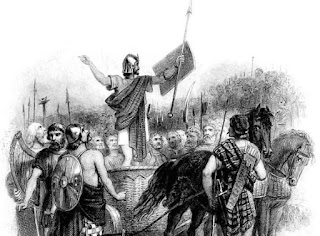William Wallace (Part 1 of 3)
William Wallace's reputation was almost entirely the creation of his enemies. The few scraps of contemporary Scottish evidence must be supplemented with the elaborations of later chroniclers and historians who may have had access to materials that no longer exist.
Investigators also have to contend with the fantastical imaginings' of Blind Harry's epic poem The Wallace, composed around 1478.
It is somewhat difficult, if fascinating, to recover the history of Wallace the Man from this tangle of legend, propaganda, and elusive fact. But it is equally important to understand the myth of the greatest and most inspirational of Scottish heroes.
The recently rediscovered cast of Wallace's seal in Glasgow's Mitchell Library indicates that he was the son (probably a younger one) of Ayrshire landowner Alan Wallace, and so was born at Ellerslie near Kilmarnock, rather than the traditionally-favoured Elderslie, Renfrewshire.
Nothing is known of him before 1296 when he may be the 'thief" accused of robbery in Perth. When English sources first mention him, he is described as "a bloody man who had been chief of brigands in Scotland".
Throughout his brief career, he frequently sheltered in the wilds of Ettrick Forest. The bow and quiver motif on his seal may well reflect his expertise with that weaponry. Whatever the truth of English propagandist allegations, the guise of outlaw became part of the Wallace mystique. What is certain is that his name figured prominently in the first reports of Scottish resistance to Edward I's occupation.
Chairman Mao believed that the best way to foment revolution was to ignite several fires which spread to join in one mighty conflagration. It was rather like that in Scotland. In the north, Andrew Murray raised the banner of resistance, while in the south-east it was borne by Sir William Douglas.
In May, 1297, Wallace killed the English sheriff of Lanark, William Heselrig. Some collusion between the three rebels may be suspected. It was stated that even those Scots who appeared to adhere to Edward I'at heart' were on the opposite side, and that Wallace was goaded into action by Sir James Stewart, his feudal superior and Bishop Robert Wishart of Glasgow, who sought to relieve "the burden of bondage under the intolerable rule of English domination".
Both dignitaries had subscribed the 'Ragman Roll', accepting Edward's overlordship. Wallace did not, but his father may have.
During the summer of 1297 Wallace launched attacks on the English justiciar at Scone; on Bishop Wishart's palace at Ancrum, in retaliation for apparent accommodation with Edward; and on occupied Dundee, while his army continued to grow in his Ettrick Forest base.
He also orchestrated forays into the north of England. These campaigns culminated in Murray and Wallace's astonishing victory at Stirling Bridge( I will cover this subject at another time ) in September 1297.
Naked hatred of the enemy was manifested in the fate of Hugh de Cressingham, the English treasurer, who perished along with 5,000 of his countrymen. Pieces of his flayed skin were sent all over Scotland as tokens of victory.
No one on either side could be in any doubt about the savagery of warfare in this period, in the art of which Wallace was to gain a particularly ferocious and unadmirable reputation.
Murray suffered a mortal wound, but he survived long enough to join with Wallace in dispatching letters from Haddington to the cities of Lubeck and Hamburg, informing their citizens that Scotland was, once again, an independent country, after their unprecedented victory, and seeking to reopen trade with Germany and the Baltic.
The two men called themselves 'commanders of the army of the kingdom of Scotland', as they did in a letter of protection issued to the monks of Hexham. In a few short months the outlaw was running the government of Scotland.
He was knighted and appointed Guardian early the following year, but Wallace always claimed to be acting 'in the name of the lord John by God's grace illustrious King of Scotland, by the consent of the community of the realm'.











Comments
Post a Comment